Star Of 'Tiger King' Says New Discovery Is "Definitely" Evidence Of Big Cats In England
By Tim Whittard
June 09, 2021 1:00 AM ‐ Documentaries • Long Reads
This article is more than three years old and was last updated in April 2022.
The rich and varied biome of the United Kingdom and its wilderness is home to countless legends and mysteries, with an opulent tradition of folklore focusing on weird and unusual creatures.
From the banshees and ogres of Welsh mythology, to Nessie and the Wulver of the Shetlands; from the Irish alligator and the Leprechauns of the Emerald Isle, to the likes of Spring-Heeled Jack and the Woodwose; and yet amongst these tales and the rich stories of anomalous entities there is one such legend that is shared by all locales and utterly refuses to fade – the big cats of the British Isles.
Matt Everett, the director and creator of upcoming film 'Britain's Big Cat Mystery' is frequently keen to remind me, that this is (at least in part) because folks like me simply won't stop talking about it, and yet there is another, far more significant reason – the ever-growing accumulation of evidence which is tilting the argument for the existence of such cats roaming our wilderness strongly in the affirmative.
For in amongst the recent alleged Photoshop hoaxes and possible work of pranksters, which has caused no end of debate this last couple of weeks, with amusement and exasperation felt by many onlookers in equal measure, there still remains a steady stream of credible 'proof', that is, for those of us who can be bothered to filter through the nonsense.
Stroud has been a hot-bed of reported big cat activity over the decades, with the town even featuring in several documentaries, and inspiring a comedy film on the subject. The local Stroud Brewery even created and named a beer in honour of the town's own legendary cat!
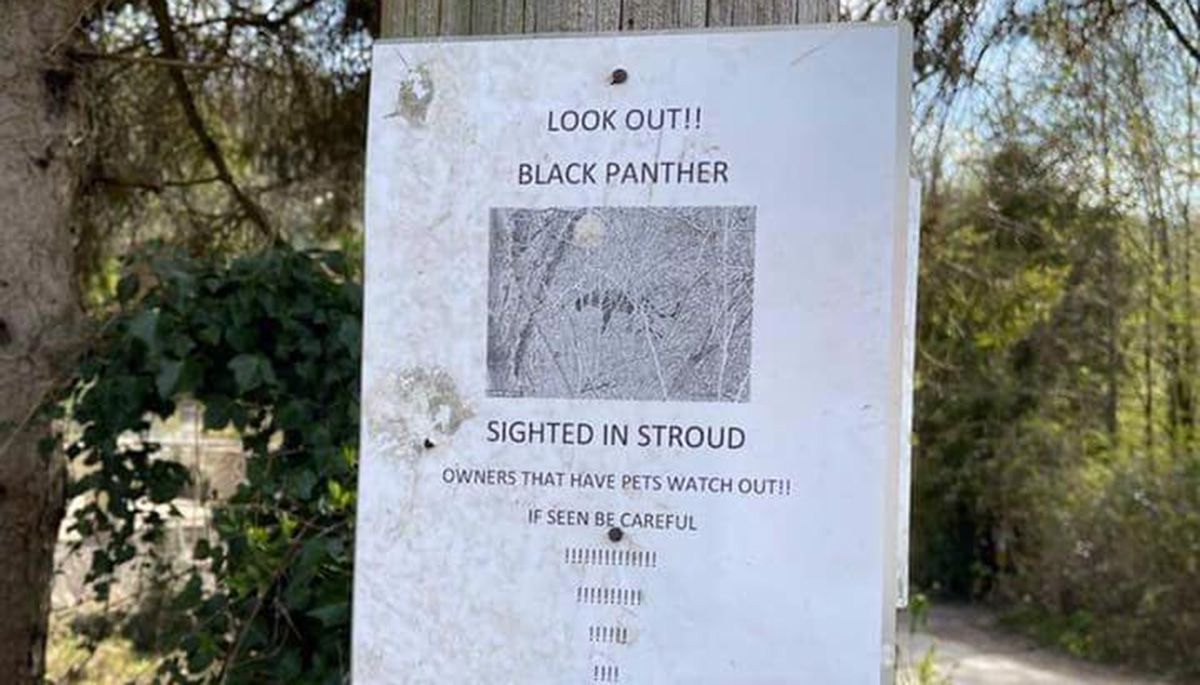
A spate of recent images claiming to show various big cats in and around the Stroud area has clearly triggered the appearance of more mysterious big cat warning signs around the town too! – and whilst some enthusiasts were angrily debating whether or not photos from Thrupp, Stroud were of a cardboard cut-out or a melanistic cheetah, and whilst others were feverishly squabbling about the authenticity of an alleged photograph of a lynx in Cornwall, there has been other far more interesting and compelling evidence sat in plain view the whole time, not garnering so much as a cursory glance.
Elsewhere, it seems most of us missed the discovery of some fresh prints...
Hailing from our own county, and completely slipping the eyes of the mainstream press, this discovery was picked up instead by the journal 'Animals & Men' last year – animal prints found in the Forest of Dean, which after being scientifically peer-reviewed were verified as being left by a large cat. Carl Marshall, assistant director for the Centre for Fortean Zoology (CFZ) who found and recorded this evidence, believes the tracks "were possibly left by a lynx", but it is also possible that another large cat species was responsible.
Carl noticed these tracks when looking for wild boar with other naturalists, and he was confident he had found something unusual after carrying out what is sometimes called the 'X test'. Carl said:
"Healthy dog tracks are usually symmetrical. If this track was canine in origin, then two straight sticks should sit neatly between the first and second toes, and the third and fourth toes, and cross diagonally, without touching either edge of the rear plantar pad, nor any of the adjacent toes."

Rhoda Watkins is an expert animal tracker and TV presenter who recently hosted a feature for ITV's 'This Morning' about the rewilding work of the 'Cornwall Beaver Project'; she honed her tracking skills with the San Bushmen in Africa and headed up the field research expedition for 'Britain's Big Cat Mystery'. Rhoda said:
"The 'X test' is great for fox tracks, but less so for domestic dogs."
"The substrate also makes a huge difference. Paws spread in mud and this can distort tracks substantially."
Despite this, she does believe the tracks could have originated from a large cat.
Advertisement ‐ Content Continues Below.
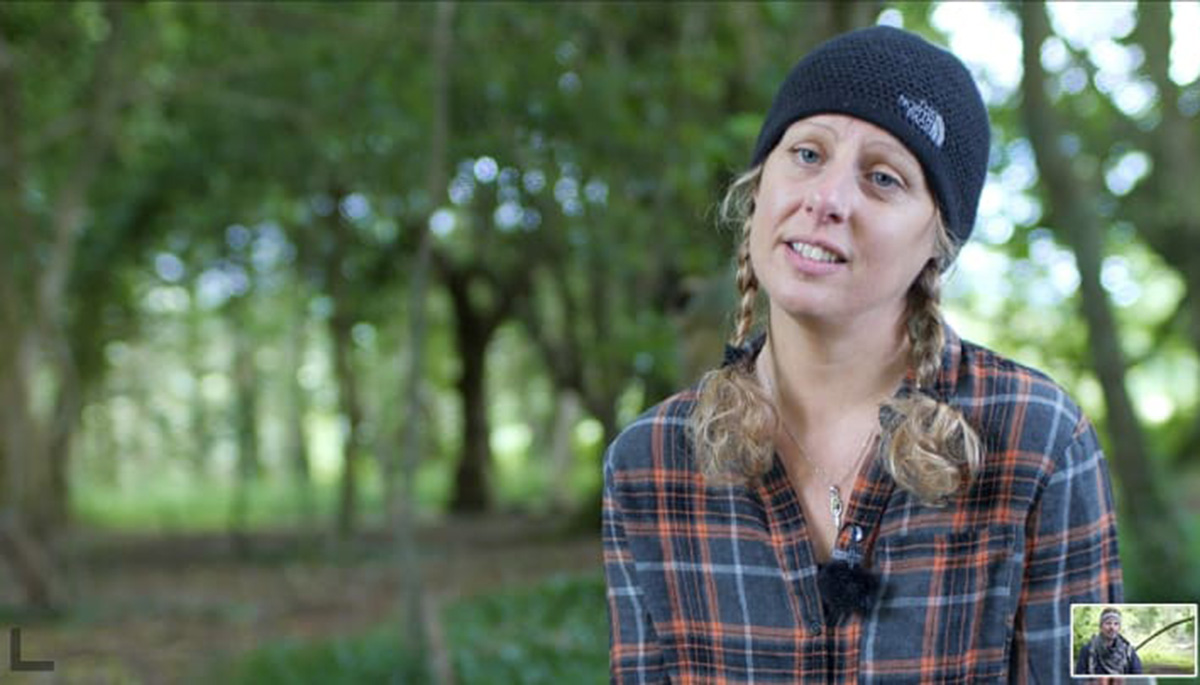
Dr. Isla Fishburn, (founder of company 'Kachina Canine' which aims to enhance the health and wellness of dogs and their human companions), is a zoologist and animal behaviour expert who specialises in canines and has worked with wolves. Commenting on the tracks, Dr. Fishburn said:
"The prints indeed could be from that of a big cat, but they may also be from a canine where their true pad pattern has been distorted given the conditions of the substrate the track was created in."
Local dog training expert and owner of the Cheltenham-based family-run business, 'Social Paws', Helen Motteram, agrees:
"The track does not appear to be from a dog."
"I have heard there may be pumas breeding in Britain – I am no cat expert, but I think it's definitely possible."
Gloucestershire's very own big cat field researcher, Frank Tunbridge was recently called out to investigate the discovery of similar tracks found in February of this year at Rudge Hill Nature Reserve, Stroud. Commenting on Carl Marshall's evidence, Frank said:
"The track exhibits features of a felid paw print, such as a coronet shape arch of toe impressions, a leading front toe, a large hind pad, and of course the classic absence of claw impressions, or if any, very sharp and needle–like."
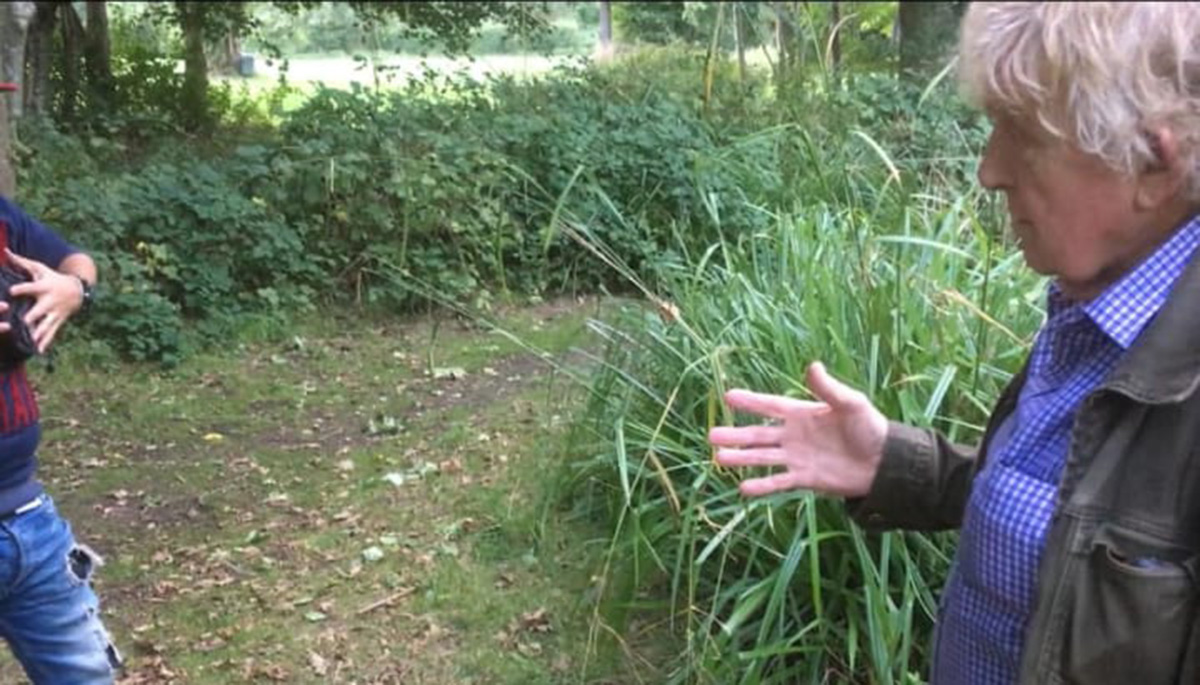
Thomas Chipperfield is a big cat keeper of the famous circus family dynasty – (yes, that family; and yes, I have already asked; and no, he really doesn't know anything about three pumas allegedly AWOL and MIA) – he has, however, worked hands-on and up-close with lions and tigers for all of his adult life, and he agrees with Frank, stating that judging from the photo, the print "resembles a big cat, as the toes are offset and not symmetrical". Despite this, Thomas was keen to add:
"I'm skeptical of the presence of big cats living wild in the UK."
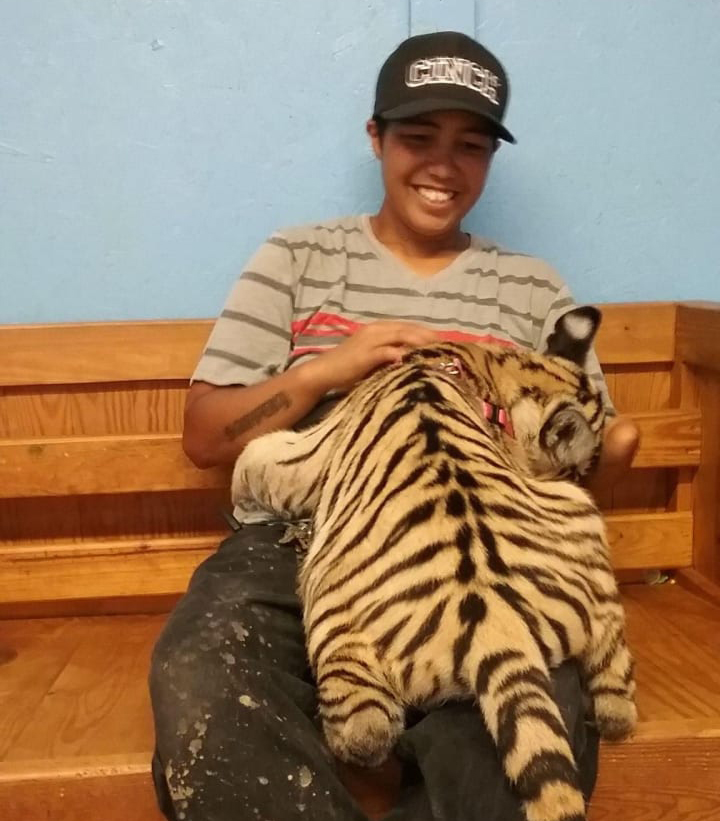
Kelci 'Saff' Saffery, who stars alongside Joe Exotic and Carole Baskin in Netflix's record-breaking smash-hit documentary series 'Tiger King: Murder, Mayhem & Madness' also leant his support to the production of 'Britain's Big Cat Mystery' and is a believer in the big cats of Britain. Saff said:
"The paw print is definitely a cat, what with the lack of claws. Even the way the front paw semi-aligns with the back paw in stride."

However, Frank and Thomas disagree with Saff's view that the track to the right was likely an imprint from the cat's rear paw, believing the print visible to the right to be of canine origin.
American author, cryptozoologist, explorer and TV presenter, Ken Gerhard (star of History Channel's 'Missing in Alaska', 'Ancient Aliens', 'The UnXplained with William Shatner' and 'The Real Wolfman') also agreed:
"My first impression is definitely felid - not canid."
"Interestingly, there's an obvious canine track just to the right of it."
"Maybe a dog was tracking the cat's scent?"
Frank said a good tip for aspiring animal trackers to remember is:
"If it's round, it's not a hound."
Felicity Richards, who runs the 'Big Cat Sightings in Somerset, UK' group on Facebook echoed some of Frank's and Thomas's observations, remarking on the "asymmetry" of the print and the apparent absence of claw marks. Felicity also stated that sightings of lynx-type cats had been reported very recently in Somerset, which shares borders with Gloucestershire and Wiltshire; most recently on 24th April of this year in the Porlock Hill area.
CEO of the aptly named non-profit organisation 'Pawprints to Freedom' which helps to re-home rescue dogs, Rebecca Sarah Smyth said of the track:
"It isn't a print from a domestic cat."
Kate Saunders, a volunteer with 'Pawprints to Freedom' said:
"We asked several of our volunteers and specialists for their opinions, and none of them think the track came from a dog."
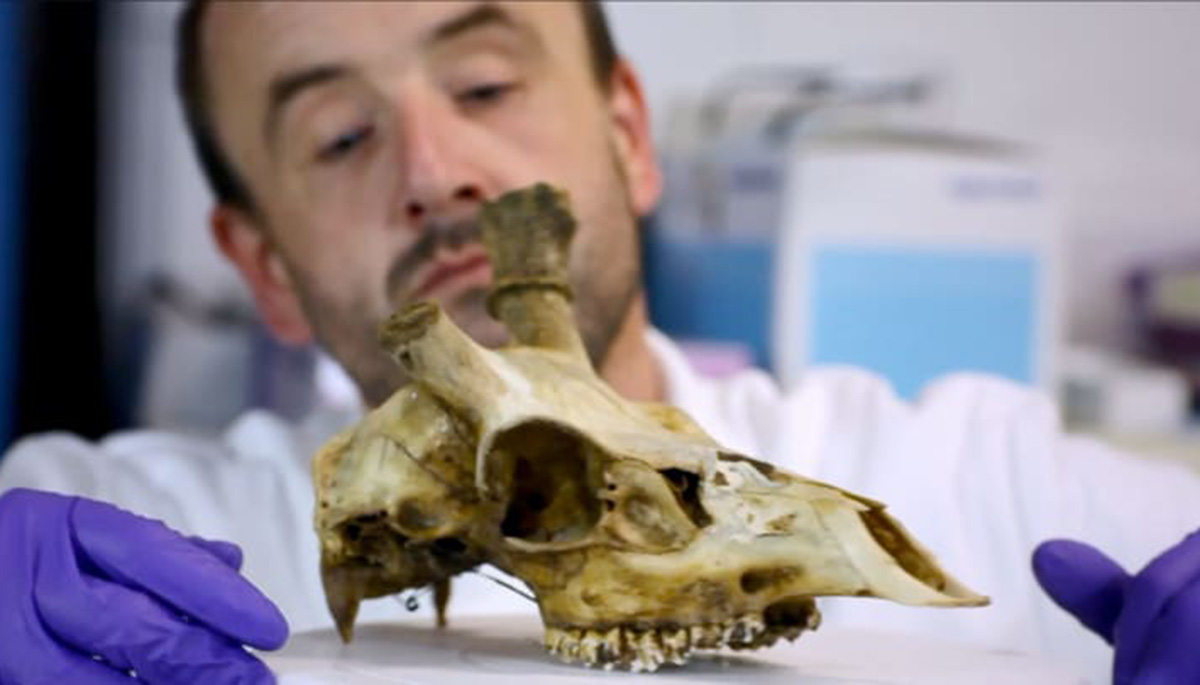
Prof. Andrew Hemmings from the Royal Agricultural University in Cirencester was invited to comment on the prints, also noting the "lack of claw marks". Other interesting characteristics of the track observed by Prof. Hemmings include:
"The compressed (rather than elongate) arrangement of the metatarsal/carpal pad and toes. Also, there would appear to be a bi-lobed element to the anterior portion of the metatarsal/carpal pad – although this is quite ambiguous in the photo."
Prof. Hemmings determined:
"As ever, it's difficult to say, but my conclusion is erring on the side of the cat."
So clearly, a number of significant interested parties feel this print is more likely feline than canine in origin, even though the different enthusiasts, experts, academics and professionals surveyed had some contrasting observations. This serves to demonstrate that there is a degree of subjectivity when interpreting detail in secondary evidence, especially when there are only photos to judge by.
Dr. Isla Fishburn of 'Kachina Canine' said:
"It excites me to think of big cats continuing to exist in parts of the UK as wild populations. The tracks are certainly not typical of a true canine print, but the photos alone don't tell us much of the story about what made them."
Rhoda Watkins agreed:
"It's very difficult to accurately and confidently analyse single examples of tracks from photos alone – there are many pitfalls; just ask Eric Shipton!"
Carl Marshall explained:
"If I had some plaster with me I would have taken casts. I wish I had some with me at the time."
Lucy Clements Brown of the 'Big cats of Wiltshire' group on Facebook believes lynx could still exist in Britain. She said:
"In June of 2012, my grandpa saw, and watched for a good minute, a lynx trotting along the brow of the hill from the cover of the Coombes Woodland into the densely wooded, field margins that criss-cross the Downs over the Ridgeway. He was certain of its species – sandy coloured, rump higher than its shoulders, a short stumpy tail, and feather-like black tufts on top of its ears. He had no doubt about it."
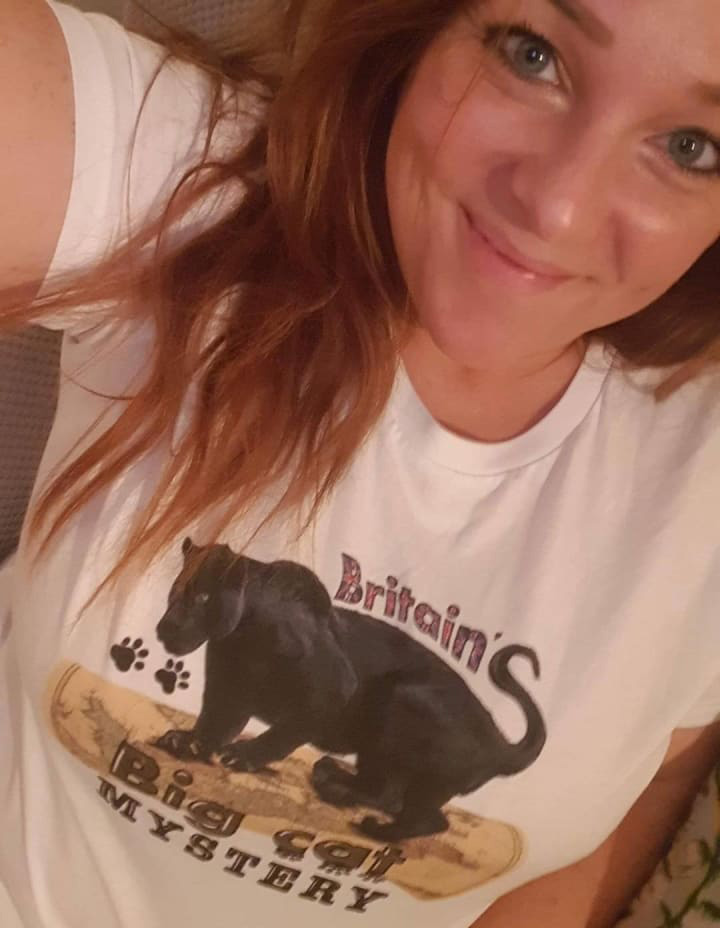
Lucy works at the 'Ashbury Tea Rooms and Shop' near the Wiltshire/Oxfordshire border – literally a stone's throw from her grandfather's sighting. Lucy often finds other possible evidence of the presence of big cats in the immediate nearby area, such as carcasses of deer, and sheep kills.
The discovery of the tracks from the Forest of Dean may represent a new breakthrough in scientific evidence coming to the fore, after several other key findings in recent years.
Local big cat enthusiasts may recall the excitement back in February 2012 when a deer carcass found in Woodchester, Stroud was extensively tested for big cat DNA after numerous experts agreed that the carcass had all the hallmarks of a big cat kill; and yet despite over 40 separate samples being tested by a reputable laboratory, only fox DNA was recovered, much to the dismay of most of the field researchers and other experts involved in the case. One such researcher, who wishes to remain anonymous stated:
"The lab might have said fox, but we all smelt rat!"
Advertisement ‐ Content Continues Below.
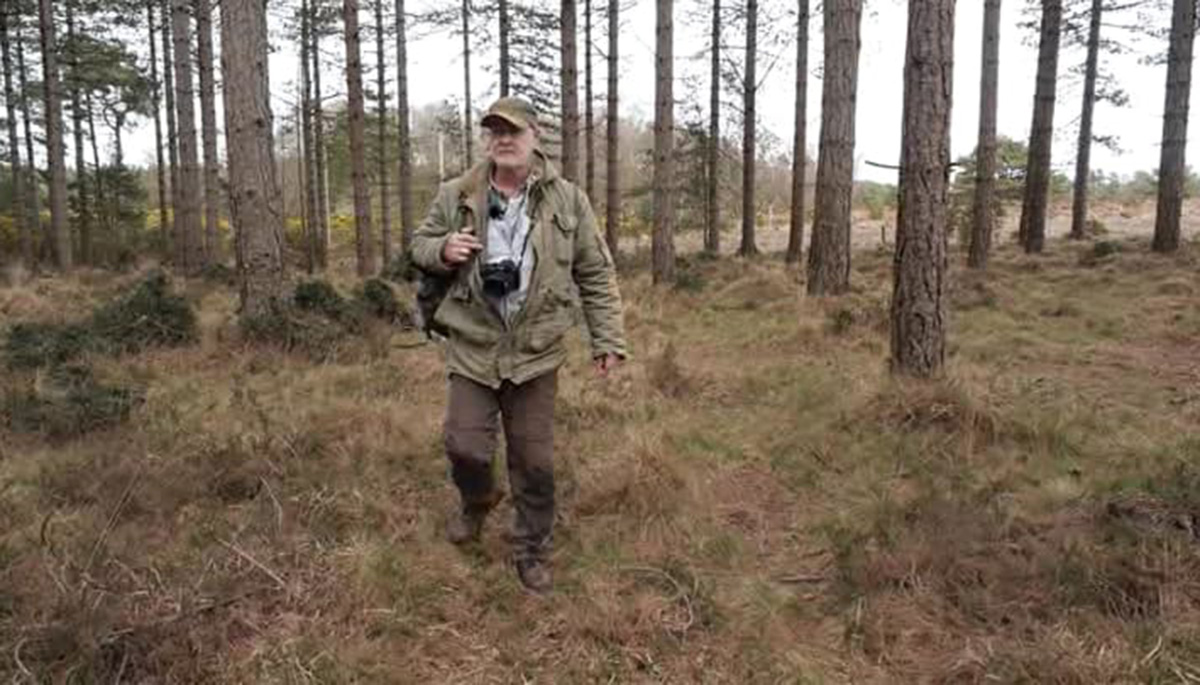
Jon McGowan, a naturalist, illustrator, lecturer and taxidermist from the south of England has been investigating the big cat phenomenon of Britain for decades. He recalls the Woodchester case from 2012, but still believes big cats are living in the beautiful British countryside despite that particular result. Commenting on the prints found in the Forest of Dean, Jon said:
"The tracks are likely from a lynx, as the shaping of the rear plantar pad shows that the middle lobe is noticeably lower than the two side lobes. This is what I would expect from a lynx."
Incredibly though, years earlier, back on 19th October 2003, the Telegraph reported that hair samples taken from a site in Lincolnshire were tested at a government-approved laboratory in Scotland called 'DNA Bioscience' and were found to have originated from a leopard, based on the morphology of the hairs; these results were later corroborated by 'RGJL' laboratories in Pittsburgh, USA.
Just over two years later, on 1st December 2005, the Manchester Evening News reported that big cat DNA was recovered from samples found in Port Talbot, Wales; again these tests were carried out by a government-approved laboratory in association with the now disbanded 'Big Cats in Britain' group.
However, after samples obtained far more recently from study areas in the south of England were uncovered during the making of 'Britain's Big Cat Mystery', the raw data was subsequently passed on to world-renowned geneticist, Prof. Todd Disotell from the University of Massachusetts, USA.

Prof. Disotell has featured in numerous TV shows including Spike TV's 'Ten Million Dollar Bigfoot Bounty', Syfy's 'Joe Rogan Questions Everything', and History Channel's 'MonsterQuest' and 'Ancient Aliens', making use of the tools of science to help bring some real educational value to the viewers of these shows. Prof. Disotell is famed for tackling fringe subjects from a very strong skeptical stance, and yet this is not the case when it comes to the big cats of Britain; according to Prof. Disotell:
"Historically there were enough people [in Britain] who kept such big cats as pets and it is perfectly possible that many animals escaped or were released."
Rhoda Watkins agrees:
"The original animals that were released in the 1970s are unlikely to be around now. The big cats we are seeing today are their offspring."
Prof. Disotell interpreted the raw data from this latest DNA study and came to some surprising conclusions!
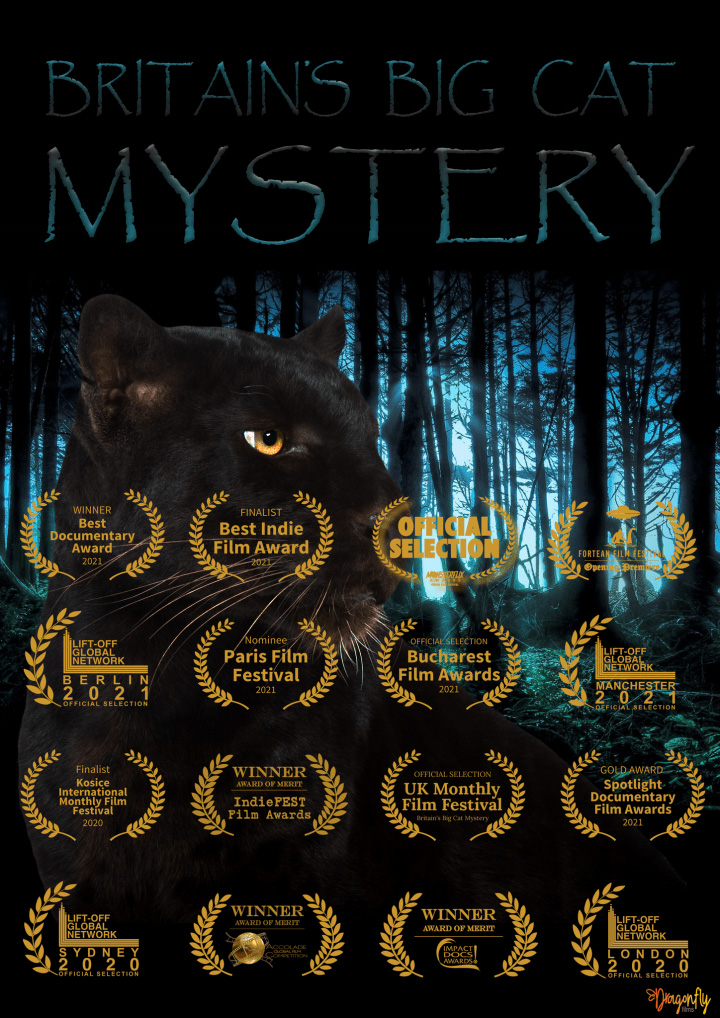
To see and hear Prof. Disotell's analysis in full, interested parties will have to wait for the release of the film 'Britain's Big Cat Mystery' by Dragonfly Films Video Production, which is currently in the hands of a distributor. Until firm news of any television première date is known, the best chance of seeing this film will be when it is screened as part of the 'Fortean Film Festival' which is coming to the Sherborne Cinema in Gloucester to host 'Big Cat Night' on Friday 27th August this year (tickets will be on sale later this month via FilmFreeway.com).
Matt Moneymaker, presenter of Animal Planet's popular TV show 'Finding Bigfoot' and president of the 'Bigfoot Field Researchers Organization' said:
"'Britain's Big Cat Mystery' is the most in-depth and authoritative documentary ever produced on the subject of big cats in Britain."
To watch the trailer and find out more about the film 'Britain's Big Cat Mystery' visit britainsbigcatmystery.com.
The film also features a cameo from local celebrity, Paul Cooper, star of Channel 4's 'Celebrity Gogglebox', and perhaps best known as the loveable rogue Martin Mucklowe in BBC3's award-winning sitcom set in Cirencester, 'This Country'. Paul plays the part of a Cornish police officer investigating big cat sightings in the mid-90s around the then Dartmoor Wildlife Park in a reconstruction.
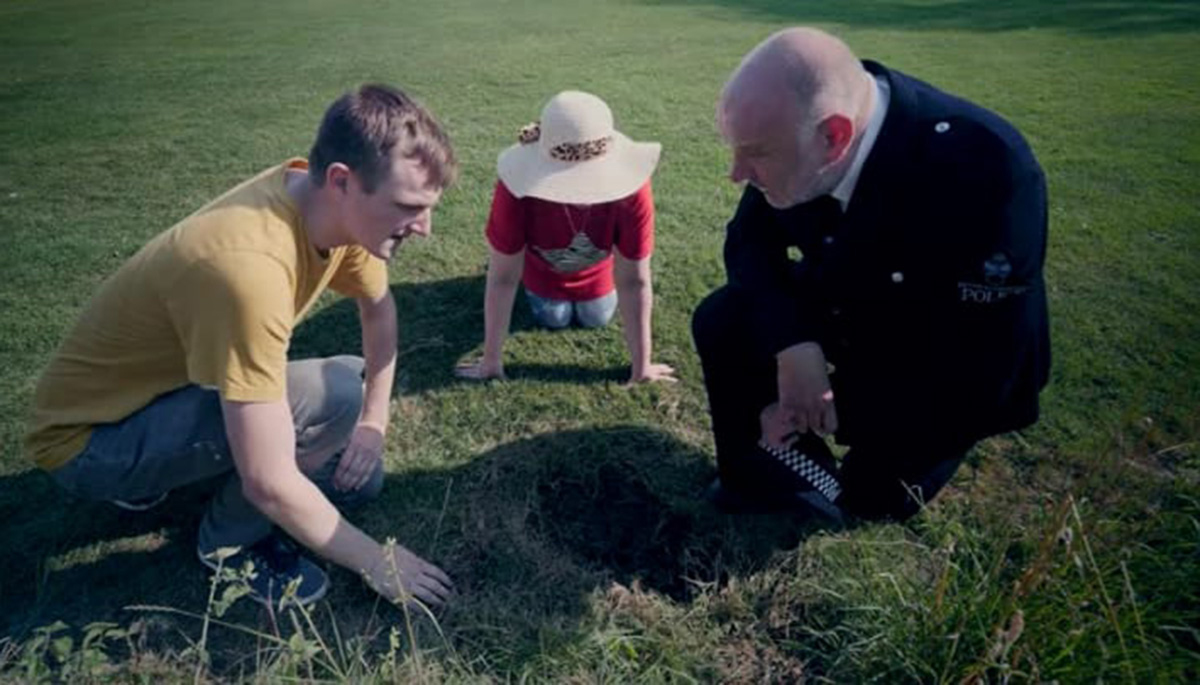
Paul, who recently picked up the award for 'Best Comedy Winner' at the Bristol International Short Film Festival for his role in the short film, 'Toast' has not had his own big cat sighting but does not doubt the reports saying:
"Someone I work with in Cirencester was cycling down the hill about 5am one morning by the leisure centre, and a great big black cat like a panther came out and just crossed the road and he couldn't believe it!"
'Britain's Big Cat Mystery' will feature at the Fortean Film Festival alongside the UK première of 'The Hunt: In Search of Australia's Big Cats', which explores a very similar big cat phenomenon down-under, with reports of panther-like cats being seen for decades all over the Australian bush – in another country where the institutes and establishments of officialdom also deny the presence of these animals.
To watch the trailer for 'The Hunt: In Search of Australia's Big Cats' and to find out more about the film visit robotarmy.com.au/the-hunt
There are a couple of other recently released and upcoming noteworthy British film projects about big cats...
Firstly, the short documentary film 'Rare Creatures', produced and directed by Cameron Nicoll which was released on YouTube in January of this year; this focuses on sightings from Scotland. Commenting on Carl Marshall's find, Cameron said:
"I'm really no expert on prints!"
You can watch the short film 'Rare Creatures' here.
Martin Pickering is a filmmaker who is working on another big cat themed film project. His film concept called 'Claws' is a creature horror film inspired by his own sighting of a big cat in his youth, when he saw what he believes was a "black leopard" in the Cambridgeshire Fens. When asked about the tracks found in the Forest of Dean, Martin said:
"I'm not an expert with paw prints but it could be from a massive dog as far as I can tell. To me it doesn't matter – I know big cats are out there, I've seen one!"
Mike Potts, CEO of 'BeastWatch', the only community interest company in the UK dedicated to rescuing escaped or abandoned exotic animals, believes the British big cat phenomenon is largely a legacy from the old era of the unregulated exotic animal trade prior to the introduction of the Dangerous Wild Animals Act in 1976. Mike said:
"There really isn't much of a mystery here. These cats are essentially abandoned animals, or potentially the offspring of abandoned animals. Most exotic animal owners in Britain nowadays are extremely responsible people, but that has not always been the case, and 'BeastWatch' still receives roughly 1,200 calls for help with incidents nationwide each year – approximately 20 of which are from the Gloucestershire and Wiltshire areas."
The recent ITV documentary mini-series 'Britain's Tiger Kings - On the Trail with Ross Kemp' highlighted that there are still a substantial number of exotic cat owners in Britain with 'pets' much bigger than the average moggy.
'BeastWatch' are called upon to help with all manner of different exotic animals, and interestingly, Mike said:
"Our first record for the Gloucestershire/Wiltshire area was actually to assist with an escaped Savannah cat!"
Another recent case of an escaped exotic cat which made the headlines was that of a Savannah hybrid which was found in an upmarket residential area of London in May of last year. This came after a lynx escaped from Dartmoor Zoological Park, Devon back in July 2016, and another lynx escaped from the 'Borth Wild Animal Kingdom, Ceredigion in October 2017.
Let's not forget the famous case of 'Lara' the lynx either! Back in May 2001, staff from London Zoo and the police worked together to humanely capture a lynx that had been seen roaming a residential part of north London. Initially dubbed the 'Beast of Barnet', the lynx was eventually taken to London Zoo where she was renamed 'Lara'. Lara lived at London Zoo for three years before being transferred to the 'Parc Zoologique du Bois de Coulange' in France, where she sadly passed away in 2009.
Mike Potts of 'BeastWatch' feels that there is potential for a range of escaped or abandoned cats to be living quietly in very low density within the biome of Britain's flora and fauna, and raises a very interesting, but seldom heard point:
"There is a lot of talk about re-introducing the lynx to Britain to help control the growing deer populations, but an in-depth and proper survey of what is out there already should be carried out first, as we could find there is little or no need."
"I would also state for the record that most abandoned animals won't last two weeks after long-term captivity, and this is more evident for obligate carnivores, especially with individuals which have never hunted for themselves."
'BeastWatch' are always looking for serious volunteers to support their work, so if you are interested in getting involved then you can find out more by looking them up on Facebook or visiting their website.
So embedded in our popular culture are the myths and legends of mysterious big cats, that a band called 'DRIVE' from up north were inspired to write a song about the phenomenon during lockdown. The talented folk band's new song titled 'Big Cat Mystery' received one of its debut plays last month by local radio DJ, Mike Reynolds, on his show on Radio Winchcombe 107.1FM.
Mike loved the song and is also an avid outdoorsman who is well acquainted with the big cat legends. Mike is a firm believer; he said:
"They're out there!"
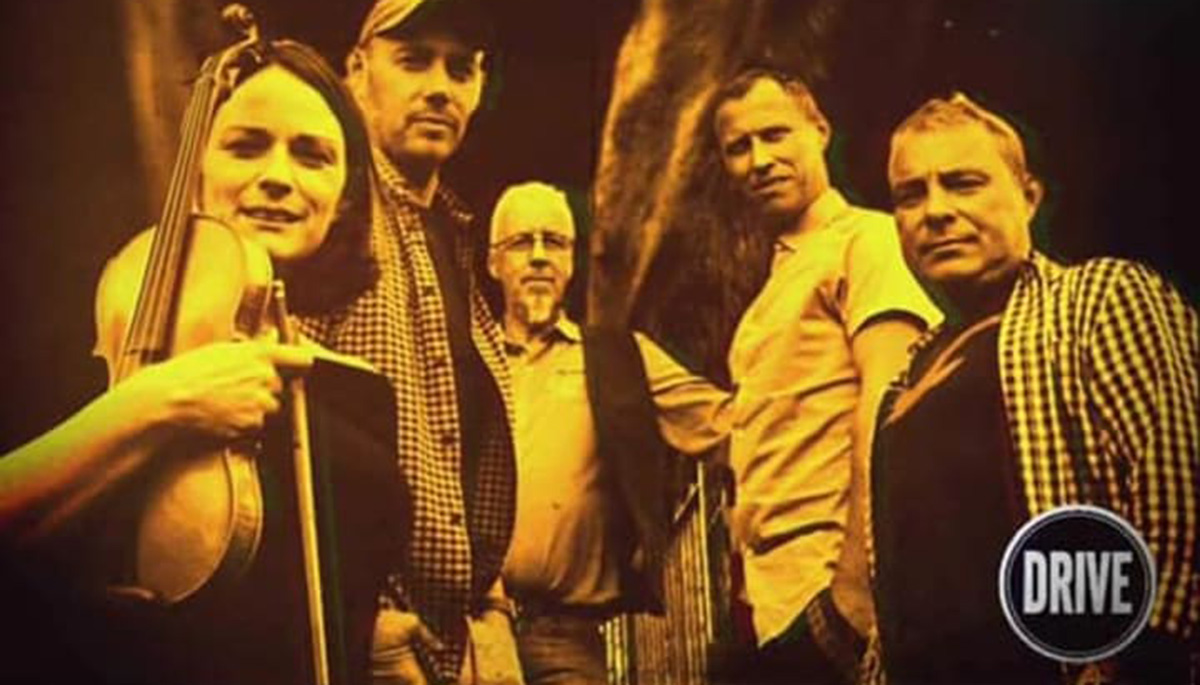
You can listen to Mike's show 'Winchcombe Calling' and hear DRIVE's new song 'Big Cat Mystery' on MicCloud.
Celebrity chef and destroyer of swear-boxes, Gordon Ramsey has even had his own experience, famously finding that a prized sheep he had bred had been predated upon and killed one night by a mysterious animal, thought to have been a big cat.
Other famous witnesses who have claimed to have seen one of the mysterious big cats of Britain include; Maurice Gibb of the Bee Gees; TV survival and bush-craft expert, Ray Mears; and perhaps most notably, the broadcaster and journalist, Clare Balding OBE.
Gloucestershire's very own Rick Minter, author of 'Big Cats: Facing Britain's Wild Predators' is considered by many to be the leading national expert on the British big cat phenomenon; earning this position due to his statesman-like professionalism and his interviewing of the largest sample of eye-witnesses of any researcher to date, amassing a total number of unique reports in excess of 1,300, which continues to grow. Rick is the true 'people's ambassador of the British big cats', sensitively listening to eye-witnesses who are frequently confused, baffled and occasionally frightened by their encounters, when often no one else will.
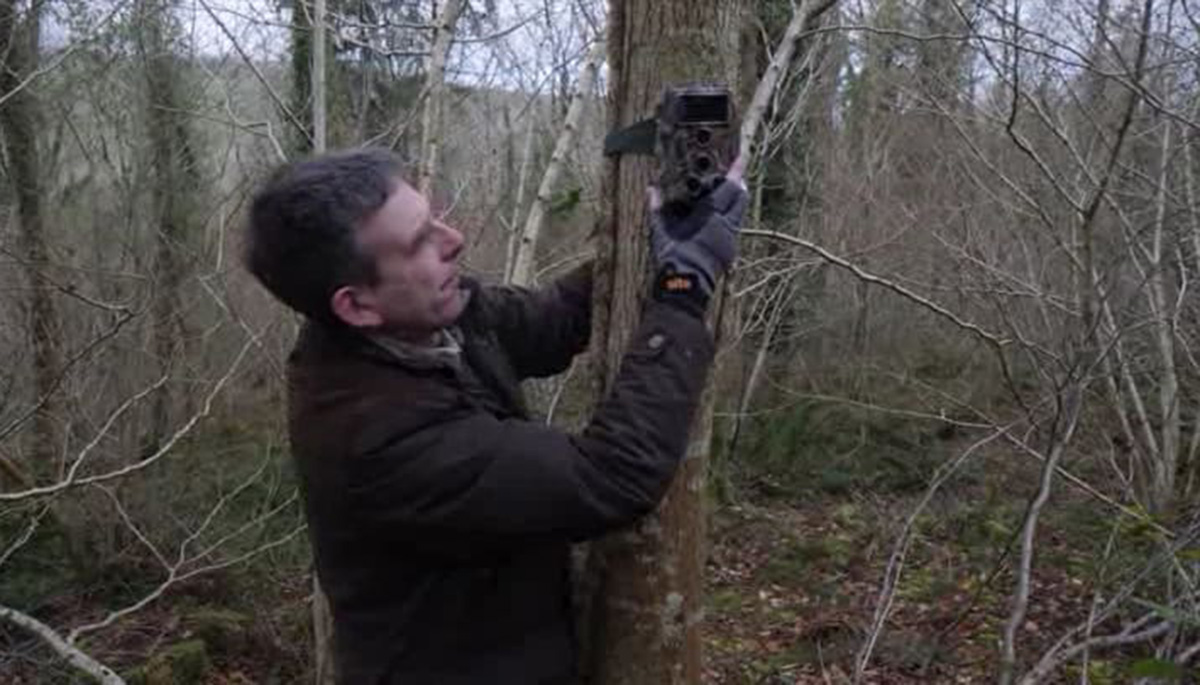
Rick recently caught up with Clare Balding OBE in March of this year, to revisit her own sighting and discuss the issue on her BBC Radio 4 show 'The Ramblings'. You can listen to Rick and Clare's chat here.
Rick also presents and produces a popular podcast on the subject called 'Big Cat Conversations' which is incredibly informative and really takes the subject forward; episode 36 of Rick's show, from October of last year examines some reports of possible lynx sightings here in Britain, featuring an interview with an eye-witness who saw a lynx-type cat locally in Gloucestershire.
New episodes of 'Big Cat Conversations' come out once a fortnight, and you can find Rick's shows via most of the widely-used podcast apps, or by visiting: bigcatconversations.com
According to Matt Moneymaker:
"The big cats reported by witnesses in Britain might be descendants of ancient native populations or feral imported specimens, or a mix of the two, but they seem to be there or else there would not be so many sightings over so many years."
The lynx is known to be exceptionally shy and is regarded by many experts as being the stealthiest and most elusive of all medium to large sized cats; that said, there are accounts of human-cat conflict with this species.
In October 2001, a farm worker called the police to report being attacked by a lynx near to Newick Hill in Sussex; the witness reported that the lynx, which was "three times bigger than a domestic cat" leapt at him while he was "clearing a thicket".
Then in January 2002, a man was allegedly attacked in Gravesend, Kent by a lynx, although admittedly, the reports from the time state that the victim flew in the face of all common sense and approached the cat after cornering it, to wrestle a rabbit from its jaws – unsurprisingly, the report suggests that this course of action did not yield pleasant results.
I should just add before I begin to close this article, that despite the likely views of some that all of this is incredibly alarming and that a 'Big Cat Night' at the local cinema may risk sensationalising the issue, especially with a scary poster and the added talk of a big cat horror film, it is worth pawsing for a moment to consider that according to the accepted understanding of pretty much all big cats and their behaviour, it is entirely accurate to say that any big cats which may be sharing our county are in such low numbers that they may only ever be fleeting visitors as they pass through to neighbouring counties in the search for a mate. Most importantly, they would not naturally choose to socialise with us noisy humans and would avoid close contact with us in almost all circumstances.
So with all this in mind, perhaps it's worth pondering the possibility that there is room for researchers and enthusiasts to take this issue very seriously whilst retaining a sense of humour...
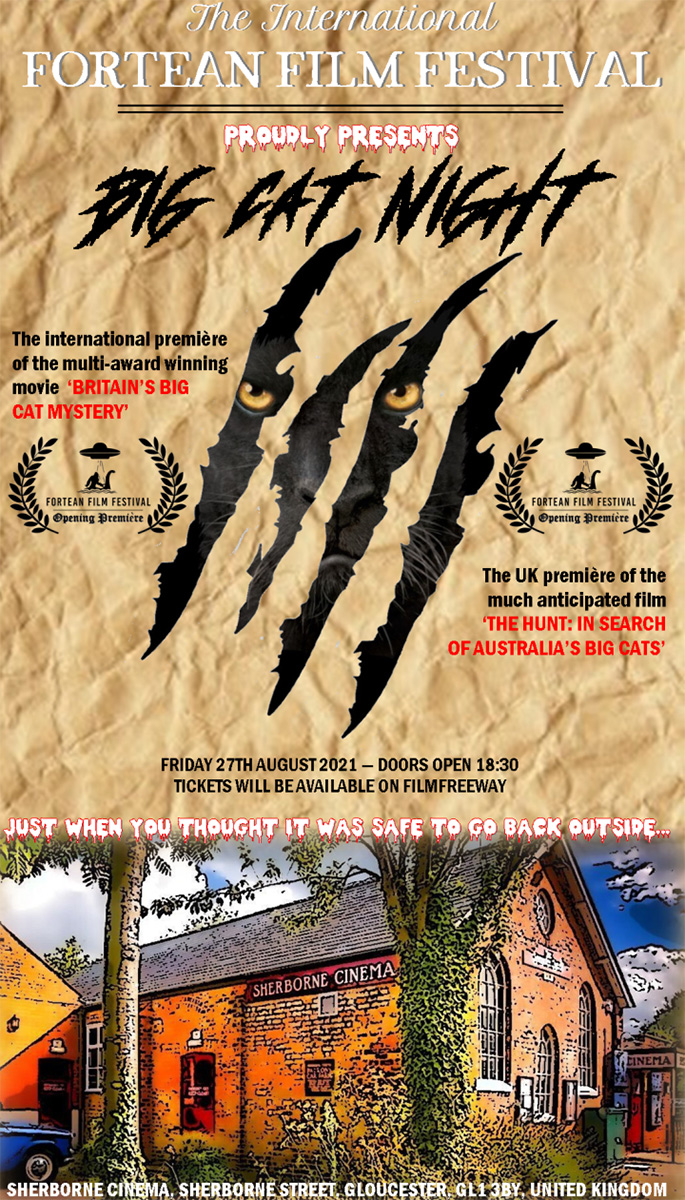
YouTuber and outspoken outsider of the big cat scene, James Cook, better known as his online persona 'Cookie' has generated much debate online over the past few years. Cookie was once enthusiastic about the subject of big cats in Britain, but his enthusiasm turned to frustration after a slew of blurry photos, misidentifications and hoaxed evidence caught his attention; Cookie then turned his hand to investigating reports, and debunking photos and videos which claimed to show big cats, whilst also discrediting many of the well-known researchers. Despite this, I find Cookie's videos (such as his 'Animal Anomalies' series) can offer a light-hearted way of killing ten minutes which can also be educational as well as entertaining; but to other big cat enthusiasts, watching his videos is akin to having their fur stroked in the wrong direction. Commenting on the photos of the track found by Carl Marshall, Cookie said:
"Stick me in the inconclusive column with no lean, I don't know."
"I don't believe big cats live wild in the UK. I don't believe there are breeding populations of lynx, puma or leopard. I think it's laughable that some 'experts' claim we have more than a hundred big cats in the UK living wild and free!"
Founder and managing director of the website 'Mysterious Britain & Ireland', Ian Topham said:
"Big cats living and thriving in the UK certainly sounds more plausible than any of our nation's other legends or myths, such as the Loch Ness Monster or Black Shuck. After all, unlike Nessie, we know these cats actually exist in other parts of the world and can survive in our climate."
"I am in no doubt that there could be the odd individual escaped cat from time to time, but personally, I am unconvinced of any theories concerning a small population of big cats on the prowl in Britain. I don't think there is enough physical evidence to support this, and in my opinion it seems extremely unlikely to be true."
Ian's website 'Mysterious Britain & Ireland' is a treasure-trove of articles and information relating to all manner of interesting and unusual legends and folklore from the British Isles.
In the meantime, I can take a degree of reassurance from the polite doubters and the not-so-polite laughter of the more vocal naysayers; for as long as there remains a significant proportion of the public who scoff at the notion of British big cats, and others who steadfastly cling on to their views of ultra-skepticism, rightly or wrongly attempting to debunk every new alleged photograph and video that emerges, it is far less likely that the mysterious big cats living in the British wilderness are in any serious danger of being disturbed or threatened themselves by the real monsters on this island – us humans...
If you have had a big cat sighting of your own and would like to report it in confidence to the 'Britain's Big Cat Mystery' team, you can do so at: britainsbigcatmystery.com
Written by Tim Whittard
Related Content
Daily Horoscopes
You May Also Like
























